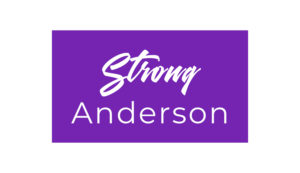What is a Company Voluntary Arrangement?
A Company Voluntary Arrangement (CVA) enables the directors to put proposals to creditors to settle or compromise their debts through a formal arrangement which binds all creditors. Most CVA’s are for a period of five years.
The procedure is used when the company is viable and can continue its business but has current debt problems.
Unlike other insolvency processes, it allows control of the company to remain with the directors who can continue to trade, although the arrangement is under the control of an Insolvency Practitioner who acts as Supervisor.
Process
Board meeting: The directors hold a meeting of the board of directors or pass written resolution to seek the advice of an Licensed Insolvency Practitioner and nominate director(s) to liaise with the Licensed Insolvency Practitioner on behalf of the board.
Appointment of Nominee: The Company appoints a Nominee who will:
- Assist the directors in preparing a viable proposal to put to their creditors;
- Report to the Court on the likelihood that the arrangement will be successful and whether in their opinion a meeting of creditors should be held in order to consider the proposals and
- Make an application for a moratorium if appropriate.
Proposal and Statement of Affairs: The directors will prepare a proposal and statement of affairs to put to their creditors with the assistance of a Licensed Insolvency Practitioner who is known as the Nominee. The proposals with provide:
- A history of how the company got into financial difficulty;
- The company’s current financial difficulties;
- How it intends to avoid further problems;
- How much the company can afford to pay each month and
- How much creditors will be paid.
The proposal can make any number of suggestions to creditors. The directors must offer the creditors a better outcome than they would expect to receive if the company was to be placed into another insolvency procedure.
Notices to Court, Creditors and Members: The proposals are sent to creditors and shareholders for their consideration and a Qualifying Decision Procedure is convened. In most cases a minimal of 7 days’ notice of the Qualified Decision Procedure is required.
Creditors’ decision procedure: A decision of your creditors will be sought. Creditors have the opportunity to approve, change or reject the proposals. A proposal is approved when 75% or more of those voting in the decision procedure have approved them (by value of debt). A second vote is then taken without ‘connected’ creditor participation, and as long as 50% or more vote for acceptance of the CVA, it will be passed.
Members decisions: After the creditor’s decision members will vote on the proposals. 50% of members or more of those voting must approve the proposals.
Moratorium
If there is pressure from creditors or an impending petition during the CVA process a moratorium can be sought at the outset which will protect the company and its assets. The moratorium acts as a breathing space. Once in place creditors will no longer be able to take, or pursue, any legal action against the company. Information regarding Moratoriums can be found here.
Effective Date
The appointment of the supervisor is effective from the date the creditors and members approve the proposals.
Effect of the CVA
If the proposals are approved, the Nominee becomes the Supervisor and implements the arrangements under the proposals or modified proposals. It is binding in all CVA creditors.
The Supervisor sends notice of approval of the CVA to all known creditors, the Court, the Registrar at Companies House and (if relevant) the Pensions Regulator or the Pension Protection Fund.
If the CVA is not approved, you will remain in your current situation. You will have no protection from recovery action by your creditors and it is possible that one of them may petition for the Winding up of your company. You can find out more about winding up here. Alternatively the directors can place the company into Creditor Voluntary Liquidation. More information on creditors voluntary liquidation can be found here.
Duties of the Supervisor
The supervisor will:
- Collect the agreed monthly payments;
- Ensure that the directors adhere to the terms of the arrangement;
- Agree creditors’ claims and
- Distribute the funds to the CVA creditors.
Conclusion of a CVA
The CVA finishes at the end of the agreed terms after all payments have been made and all conditions of the CVA have been adhered to. At this point any outstanding unsecured debt will be written off and the company will be legally free of all the CVA debts.
If the CVA is not successfully completed the arrangement will fail. The arrangement terms may require the Supervisor to petition for the Winding up of your company. You can find out more about winding up here.
Advantages of CVAs
The advantages of a CVS include:
- A CVA allowing director(s) to remain in control of the business;
- It allows the company to continue trading;
- Unaffordable debts are written off and
- Creditor pressure and interest rates frozen.
Disadvantages of a CVA
There are disadvantages to a CVA. These include but are not limited to:
- Legal obligation to adhere to the scheme;
- Company credit rating is affected;
- Some creditors may no longer wish to do further business with you and
- Failure of a CVA leads to further insolvency measures.

